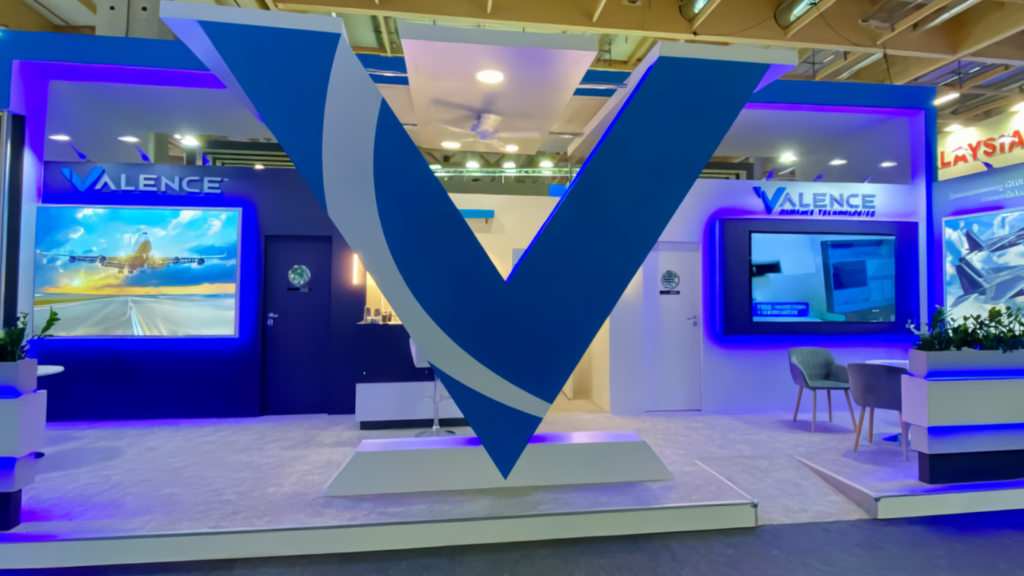Key Takeaways:
- Mil-Spec anodizing is a specialized process tailored for military applications, enhancing aluminum parts’ corrosion resistance, durability, and appearance through three distinct classes (Type I, II, III), each designed for specific operational needs.
- The process not only improves the material’s resistance to harsh environmental conditions but also increases surface hardness and wear resistance, making it ideal for components exposed to extreme wear and tear.
- It offers additional benefits such as improved paint and primer adhesion and electrical insulation properties, crucial for maintaining the effectiveness and reliability of military and aerospace equipment. For comprehensive support beyond paint adhesion and electrical insulation enhancements, explore Valence Surface Technologies’ full range of services.
Mil-Spec anodizing is a process that follows strict military specifications to improve the corrosion resistance, durability, and appearance of aluminum parts. It’s essential for military and aerospace applications to ensure equipment can endure harsh conditions. This method differs from standard anodizing by meeting rigorous performance standards, crucial for the durability and reliability of vital defense and aerospace equipment.
To ensure your military and aerospace equipment meet these stringent standards and benefit from the highest level of corrosion resistance and durability, explore Valence Surface Technologies’ comprehensive chemical processing services. Their expertise in aerospace wet processes guarantees a flawless finish for a variety of alloys, enhancing the safety, long-term use, and consistency of your equipment.
Elevate Your Aerospace Finishing With Valence Surface Tech
Contact Valence Today to discuss your aerospace finishing needs and discover how we can contribute to your success with our industry-leading capabilities and innovative solutions. |
Understanding Mil-Spec Anodizing Classes
Type I: Chromic Acid Anodizing
Type I anodizing utilizes chromic acid to create a thin, protective coat on aluminum parts. This class is favored for applications requiring minimal dimensional changes, as the coating is thinner compared to other types. It provides effective corrosion resistance and is suitable for parts that must maintain tight tolerances.
Type II: Sulfuric Acid Anodizing
Type II involves sulfuric acid anodizing, producing a slightly thicker coat that enhances aesthetic appeal alongside corrosion resistance. This class is versatile, supporting a range of color finishes, and is commonly used for consumer and aerospace applications where appearance and moderate protection are key.
Type III: Hard Coat Anodizing
Type III, or hard coat anodizing, offers the thickest and most durable protective layer. It significantly increases wear and corrosion resistance, making it ideal for components exposed to extreme environmental conditions. This class is essential for parts requiring high durability and extended lifespan.
Benefits Of Mil-Spec Anodizing For Military And Aerospace Equipment
Enhanced Corrosion Resistance
Mil-Spec anodizing significantly increases aluminum’s resistance to corrosion, crucial for equipment used in marine environments or exposed to harsh weather conditions. This process forms a protective layer that shields the metal from oxidizing agents.
Increased Surface Hardness And Wear Resistance
The anodizing process hardens the surface of aluminum parts, making them more resistant to wear and tear. This is especially beneficial for moving parts or those subject to frequent friction, extending the overall lifespan of military and aerospace components.
Improved Paint And Primer Adhesion
Anodized surfaces offer better adhesion for paints and primers, ensuring that protective coatings adhere properly and last longer. This is vital for maintaining the effectiveness of camouflage and protective finishes on military equipment.
Electrical Insulation Properties
This anodizing process also endows aluminum components with electrical insulation properties, which is ideal for parts used in electronic and power systems. Such a feature is vital in preventing short circuits and maintaining the reliability of electronics in military and aerospace applications.
Valence’s Expertise In Mil-Spec Anodizing
Valence Surface Technologies stands out for its unparalleled expertise in Mil-Spec anodizing, catering to the rigorous standards required by military and aerospace equipment. Their state-of-the-art facilities are equipped to handle the precise needs of Type I, Type II, and Type III anodizing, ensuring that components meet the stringent durability, corrosion resistance, and performance criteria demanded by these sectors. With an impressive portfolio of certifications and approvals, Valence demonstrates a commitment to quality and reliability, making them a preferred partner for companies seeking top-tier metal finishing services.
Building on Valence Surface Technologies’ commitment to excellence in metal finishing, their Nondestructive Testing Services further ensure the integrity and performance of aerospace components without causing any damage. With state-of-the-art techniques like Fluorescent Penetrant Inspection and Eddy Current Testing, Valence provides indispensable quality assurance, meeting the aerospace industry’s highest standards.
Choosing The Right Mil-Spec Anodizing Class For Your Needs
Assessing Operational Environment
It’s essential to know the environmental challenges your component will encounter. For parts that will be subjected to harsh weather or chemicals, Type I’s corrosion resistance is advantageous. Meanwhile, Type III is more suitable for conditions where abrasion resistance is a priority.
Considering Durability Requirements
Evaluate the wear and tear your part will endure. For high-wear applications, the increased surface hardness of Type III is advantageous, providing longevity and resistance to physical impacts.
Aesthetic And Functional Preferences
Type II offers a balance between aesthetics and function with various color options, making it suitable for visible components requiring moderate protection.
Final Thoughts
Mil-Spec anodizing represents a cornerstone in the advancement of military and aerospace technologies, offering a tailored approach to enhancing the durability and performance of aluminum components. This process, categorized into three distinct classes, is pivotal in addressing the unique challenges faced by equipment in extreme environments, from improving corrosion resistance and wear protection to ensuring optimal paint adhesion and electrical insulation. Valence Surface Technologies’ mastery in this field underscores the importance of precision and quality in meeting the demanding standards required by these critical sectors, highlighting the essential role of Mil-Spec anodizing in ensuring the longevity and reliability of key defense and aerospace applications.
To complement the exceptional durability and performance enhancements provided by Mil-Spec anodizing, consider leveraging Valence Surface Technologies’ Aerospace Plating Services. They offer a diverse range of plating solutions including cadmium, chrome, and electroless nickel plating to further improve corrosion resistance, wear resistance, and electrical conductivity of aerospace components. With AS9100 & NADCAP approvals, Valence ensures your critical parts meet the highest aerospace quality standards.
Read Also:
- Fluorescent Penetrant Inspection: An Essential Technique For Surface Finishing In The Aerospace And Defense Industries
- Adhesive Primer: Essential For Aerospace Surface Finishing
- Chemical Conversion Coating: An Essential Surface Finishing Process For The Aerospace And Defense Industries
Frequently Asked Questions
What is the primary purpose of Mil-Spec anodizing?
Mil-Spec anodizing improves aluminum components’ corrosion resistance, durability, and appearance, meeting the strict standards of military and aerospace applications. It’s essential for parts exposed to harsh environments.
How does Mil-Spec anodizing differ from standard anodizing?
Following strict military specifications, this anodizing process surpasses standard anodizing by meeting higher performance standards, including more stringent durability, corrosion resistance tests, and precise criteria for thickness and appearance.
Can Mil-Spec anodizing be applied to any aluminum alloy?
The outcome of the anodizing process can vary with different aluminum alloys; hence, consulting a specialist to assess the compatibility of the alloy with the desired Mil-Spec anodizing type is crucial.
What are the color options available for Type II Mil-Spec anodizing?
Type II Mil-Spec anodizing offers extensive color finishes, including standard and custom hues, enabling enhanced customization for aesthetics and identification. Available color options depend on the provider.
How does the thickness of the anodized layer affect the component’s properties?
The thickness of the anodized layer is crucial for a component’s corrosion and wear resistance, and electrical insulation. Type III anodizing creates thicker layers for more protection, potentially altering the part’s dimensions and weight.
Is Mil-Spec anodizing environmentally friendly?
Mil-Spec anodizing, particularly Type I using chromic acid, has faced environmental concerns. Yet, technological advancements and strict regulations have led to greener practices, such as using safer chemicals and recycling.
How long does the Mil-Spec anodizing process take?
The duration of the Mil-Spec anodizing process can vary depending on the type of anodizing, the size and complexity of the components, and the specific requirements of the military specification. Generally, the process can take anywhere from a few hours to several days.
Can Mil-Spec anodized components be repaired or re-anodized?
Yes, Mil-Spec anodized components can often be repaired or re-anodized if they become damaged or worn. The feasibility and method of repair or re-anodizing depend on the extent of the damage and the specific anodizing class.
How do I choose the right Mil-Spec anodizing class for my application?
Choosing the right Mil-Spec anodizing class involves assessing the operational environment, durability requirements, and aesthetic preferences of your component. Consulting with an anodizing specialist can help determine the best class to meet your specific needs.
Are there any limitations to the shapes or sizes of parts that can be Mil-Spec anodized?
Despite limitations from tank size and the need for uniform electrical contact, most part shapes and sizes can be anodized. Complex shapes might need special fixtures or techniques for even coverage.

